Author: Anastasia Bezverkha
Original source of the article: Talking Drugs
The massive criminalization of people who use drugs in the EECA region instead of the declared support of public health and social security imposes a financial and social burden on States. On average, incarceration costs are 2-6 times higher than the expenditures for health and social services.
This is evidenced by the results of a study conducted by the Eurasian Harm Reduction Association (EHRA). The organization collected data on incarceration costs of people who use drugs from countries of the EECA region as well as data on money spent for harm reduction services.
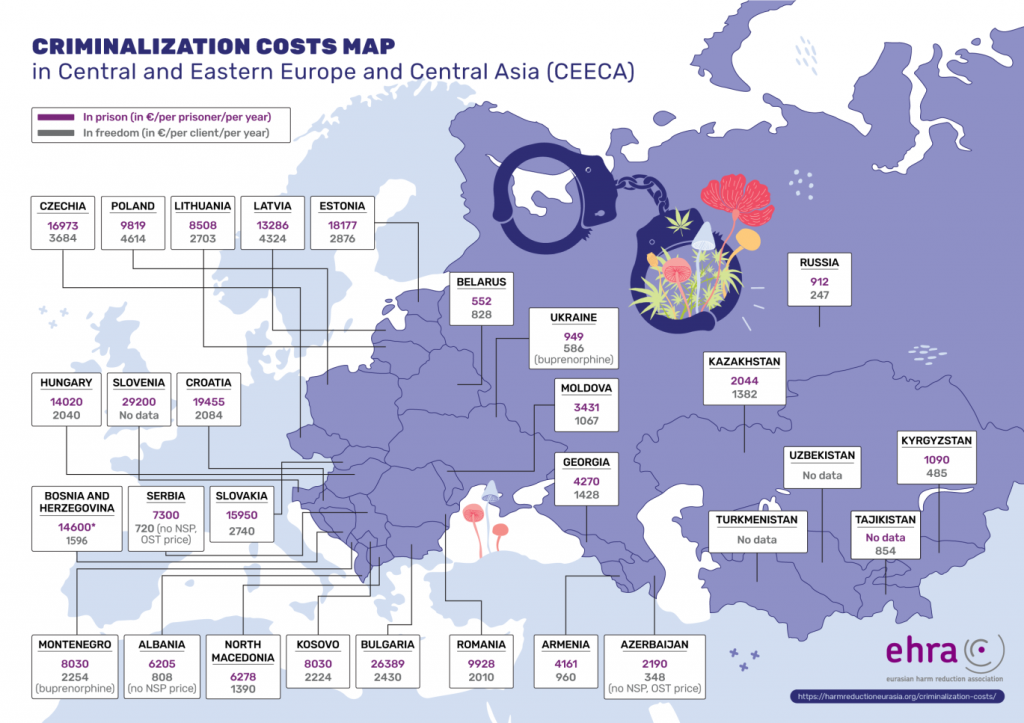
The study showed that in almost all the countries of the EECA region harm reduction and other health services are extremely underfunded by the state and depend on international donors. Due to de facto criminalization of people who use drugs, these services are usually not a priority and therefore insufficiently funded from government budget.
The research also demonstrated that there are a lot of people in the EECA region imprisoned for drug related crimes. For instance, 29 % of all inmates in Georgia are convicted of such offences. Incommensurability of punishments for crimes related to drugs indicates a direction in which the country is developing in terms of democratization. In Lithuania the term of imprisonment imposed by the courts for the drug related offences, in cases when there is mostly no victim, but there is an adult who uses drugs himself/herself, is 8 years. At the same time, the average punishment for crimes against the person (rape or human trafficking) is about 6 years.
Bulgaria
Bulgaria, which is a relatively small country, spends 26 000 Euro annually for the detention of one person who uses drugs that is more than all other countries of the region except Slovenia. At the same time, there are no harm reduction programs in prisons (needle and syringe exchange points (NSP), opioid substitution therapy (OST) programs). According to the study, the Bulgarian government spends only 2 400 Euro per person per year for treatment and harm reduction programs. Thus, the cost of health care and social services is almost 11 times less than the cost of detention.
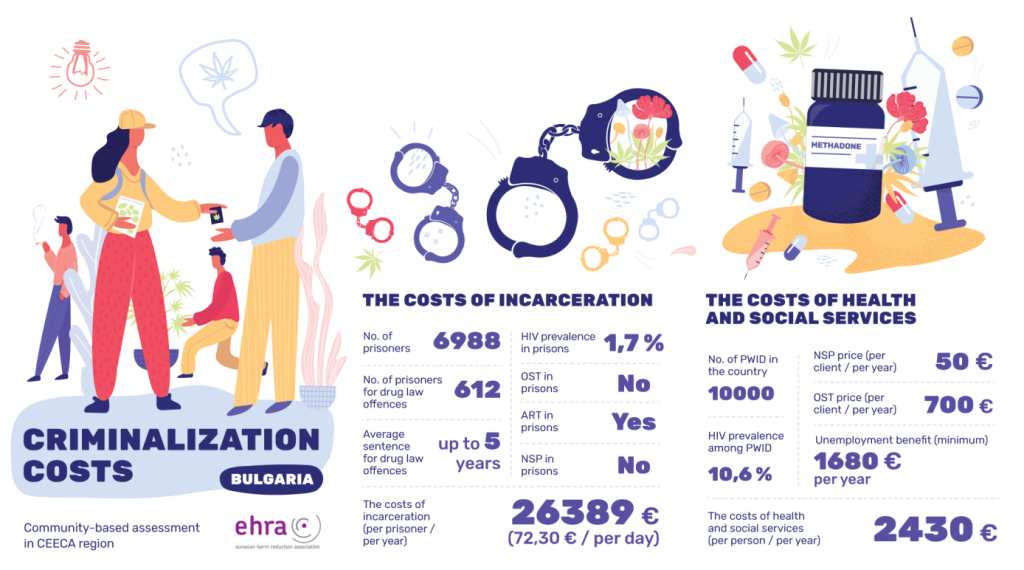
Russia
Russia is the country with the highest number of prisoners in EECA region. According to the Council of Europe Annual Penal Statistics SPACE I, there are 602 176 inmates in Russian prisons, 129 419 of them are convicted of drug related crimes. However, the country spends only 912 Euro/per inmate annually that means only 2.5 Euro/per inmate/per day. The estimate number of people who inject drugs (PWID) in Russia is around 1 million and 800 thousand persons. HIV prevalence among PWID is 25.6 %. Let’s remind: OST in Russia is prohibited by law.
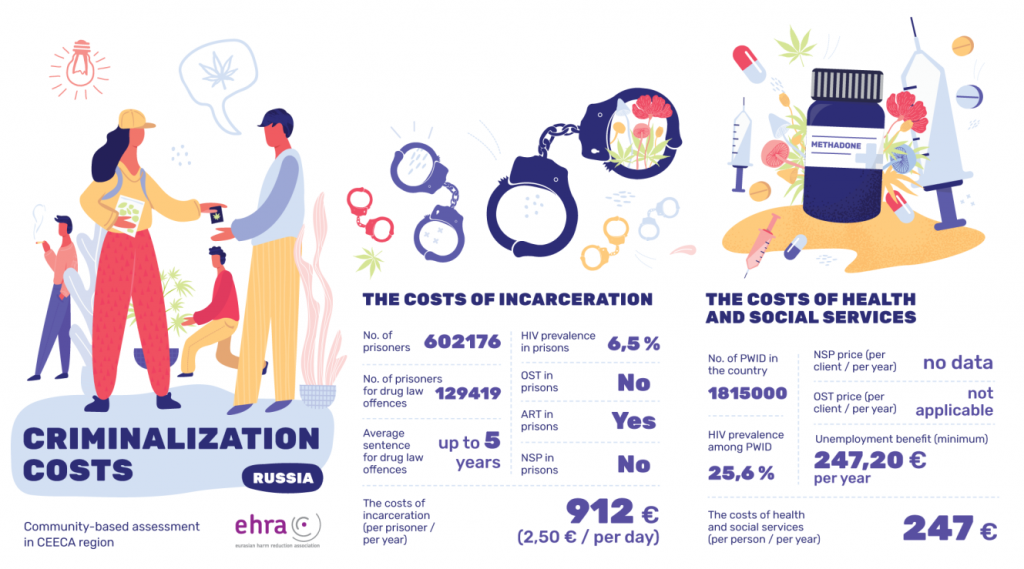
Kyrgyzstan
According to the National Statistics Committee as of 2017, there were approximately 7 475 inmates in Kyrgyzstan prisons, 526 of them were imprisoned for drug related crimes.
Speaking about treatment of persons with drug dependence in prisons, it should be mentioned, that there are 9 OST sites in prison settings in Kyrgyzstan as well as there is access to ART. As of January 1, 2017 there were 14 NSP exchange points in penitentiary system. The average amount spent per day for the detention of one inmate in Kyrgyzstan prisons is 2.99 Euro which adds up to 1 091.35 Euro per inmate annually. National OST and NSP programs for people who use drugs in Kyrgyzstan cost the state around 465.85 Euro per person per year.
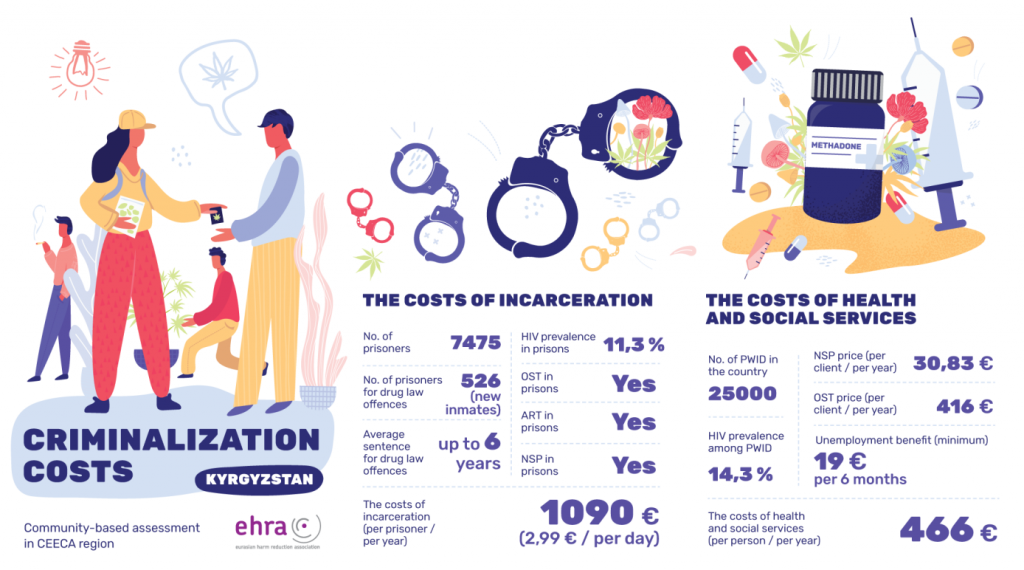
Ukraine
There are 55 000 inmates in Ukrainian prisons, about 4 400 of them are convicted of drug related offences. In Ukraine harm reduction services such as NSP and OST are not available in prison settings. At the same time, the daily cost for the detention of one inmate in Ukrainian prisons is rather low – 2.6 Euro/per day/ per person – as well as in Russia. The estimate number of people who inject drugs in Ukraine is 350 000 persons. In case the person who uses injecting drugs needs standard package of harm reduction services such as OST, NSP and unemployment benefit, it will cost the state around 392 Euro/per person/per year. Thus, health and social services cost 5 times lower than incarceration.
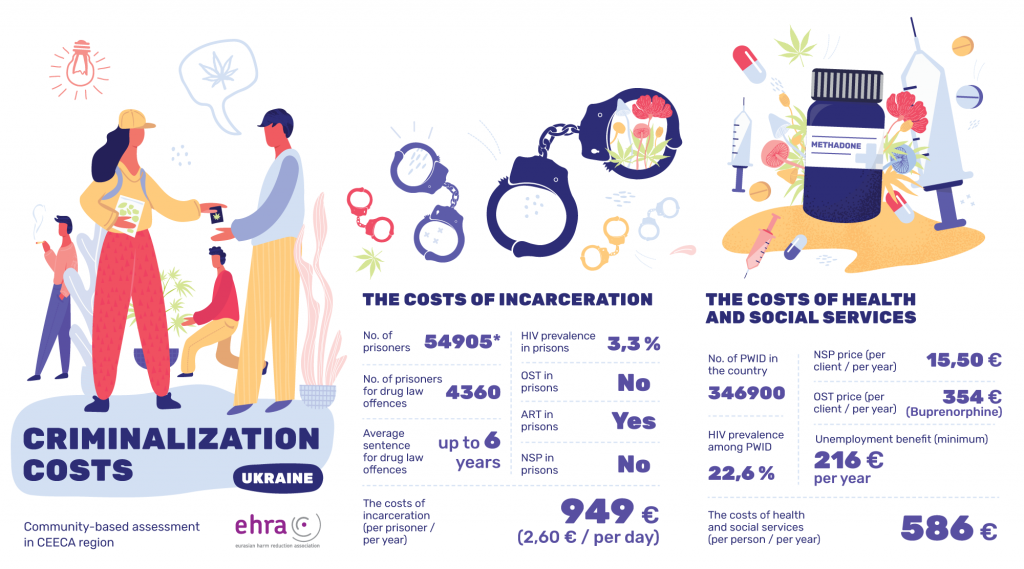
Eliza Kurcevič, the research coordinator, told TalkingDrugs that budgetary funds are inappropriately allocated in the region under the existing drug policy. “In the majority of the countries of the EECA region situation is as follows: there are money for harm reduction services in all states, but they need to be reallocated within existing budgets. Significant savings in state budgets can be made if the countries refer people who use drugs to harm reduction services such as substitution therapy, employment assistance and support of their social adaptation instead of imprisonment”, – claims Ms. Kurcevič.
The cost of incarceration is calculated by multiplying 365 days (1 year) to the cost of maintenance of one prisoner/per day. This amount does not include the following expenses: police work, investigation of the case, court proceedings and lost taxes, which person cannot pay, because of the incarceration and following integration of a person into the society. If those expenditures were taken into account the cost of incarceration would be several times higher. Even a short term in prison means losses for a person such as losing opportunities for education, well-paid job, difficulties with custody of children and caring of them, and loss of a breadwinner for an entire family. Those losses caused by repressive drug policy are not yet taken into consideration in this study as well as the state cost to maintain special police units on drug related crimes, the work of judges, lawyers’ salaries, and other related expenditures.
The study data has been collected by the efforts of the PWUD community, the EHRA partners and by organizations which provide harm reduction services in the countries of the EECA region.
For more detailed information on the countries of the EECA region see the EHRA website at the link.
